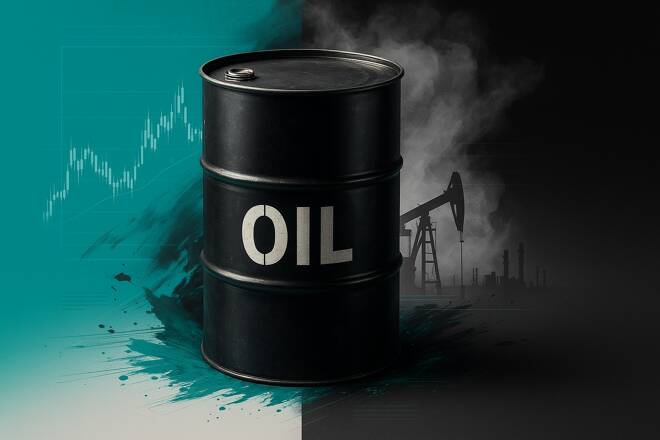Advertisement
Advertisement
Oil and Natural Gas Analysis: Bearish Breakdown in Crude, Bullish Momentum in Gas
By:
Oil prices dropped on shifting OPEC forecasts, while natural gas shows bullish momentum, and the U.S. dollar index remains in consolidation with key levels in focus.
Oil prices dropped sharply after OPEC revised its outlook, projecting that global supply will match demand by 2026. This represents a shift from earlier forecasts of a supply deficit, which had previously supported higher prices.
Brent oil (BCO) and WTI oil (CL) dropped over 3% on Wednesday, following OPEC’s updated outlook and weak U.S. economic signals. Some sellers are now struggling to find buyers, adding pressure to the front end of the oil curve.
While the International Energy Agency expects long-term demand growth, the market remains focused on near-term oversupply risks. A potential demand boost could come from the reopening of the U.S. government. However, concerns over excess supply and a weakening economy continue to weigh on oil prices.
WTI Crude Oil (CL) Technical Analysis
WTI Oil Daily Chart – Bearish Pressure
The daily chart for WTI crude oil shows that the price failed to break above the 50-day SMA at the $62 level. This failure triggered a sharp drop below the $60 area. This decline has initiated a wave of renewed bearish momentum, and the price continues to trend downward toward the $55 region. Moreover, the RSI remains below the mid-level, indicating further downside pressure in oil prices.
The negative price action in the oil market is supported by the long-term monthly chart, which shows a breakdown below a symmetrical triangle pattern. This breakout to the downside has triggered strong bearish momentum, and prices may continue to decline sharply in the coming months.
WTI Oil 4-Hour Chart – Negative Price Action
The 4-hour chart for WTI crude oil shows continued negative momentum below the $62 level. This suggests the building of bearish pressure, which is likely to push prices lower. The $62 level remains key overhead resistance, and a breakout above it would open the door for further upside. Meanwhile, the next immediate support lies in the $55-$56 region.
Natural Gas (NG) Technical Analysis
Natural Gas Daily Chart – Bullish Momentum
The daily chart for natural gas (NG) shows that the price has broken above the $3.50 resistance and continues to advance higher. It is currently consolidating around the key $4.50 to $4.70 zone, and a breakout above this level could lead to further gains.
Overall, the price momentum remains strongly bullish, supported by a rebound from the neckline of the cup-and-handle pattern around the $2.50 to $2.60 region. This strong recovery from support suggests that natural gas is likely to trade higher in the coming weeks.
Natural Gas 4-Hour Chart – Positive Price Action
The 4-hour chart for natural gas shows short-term price action, where the price broke above the $3.50–$3.60 zone and surged toward resistance at $4.70. The price is now consolidating around this level, awaiting its next move. This consolidation suggests that bullish momentum is building. Any short-term correction in natural gas prices may present a buying opportunity.
US Dollar Index (DXY) Technical Analysis
US Dollar Daily Chart – Resistance at 200 Day SMA.
The daily chart for the U.S. Dollar Index shows that the price hit resistance near 100.50 at the 200-day SMA. The ongoing consolidation below 100.50 keeps the index within a sideways range. A breakout above this level would signal potential upside.
However, a break below the 98.00 level could lead to further downside pressure. As long as the index remains between 96.50 and 100.50, the next directional move remains uncertain.
US Dollar 4-Hour Chart – Consolidation
The 4-hour chart for the U.S. Dollar Index shows that the price is consolidating between 98.60 and 100.50. A break below 98.60 would shift the index toward a more negative direction, while a breakout above 100.50 could push it toward the 102.00 region. Overall, the index is trading in a tight range and is awaiting its next move.
About the Author
Muhammad Umairauthor
Muhammad Umair is a finance MBA and engineering PhD. As a seasoned financial analyst specializing in currencies and precious metals, he combines his multidisciplinary academic background to deliver a data-driven, contrarian perspective. As founder of Gold Predictors, he leads a team providing advanced market analytics, quantitative research, and refined precious metals trading strategies.
Advertisement
